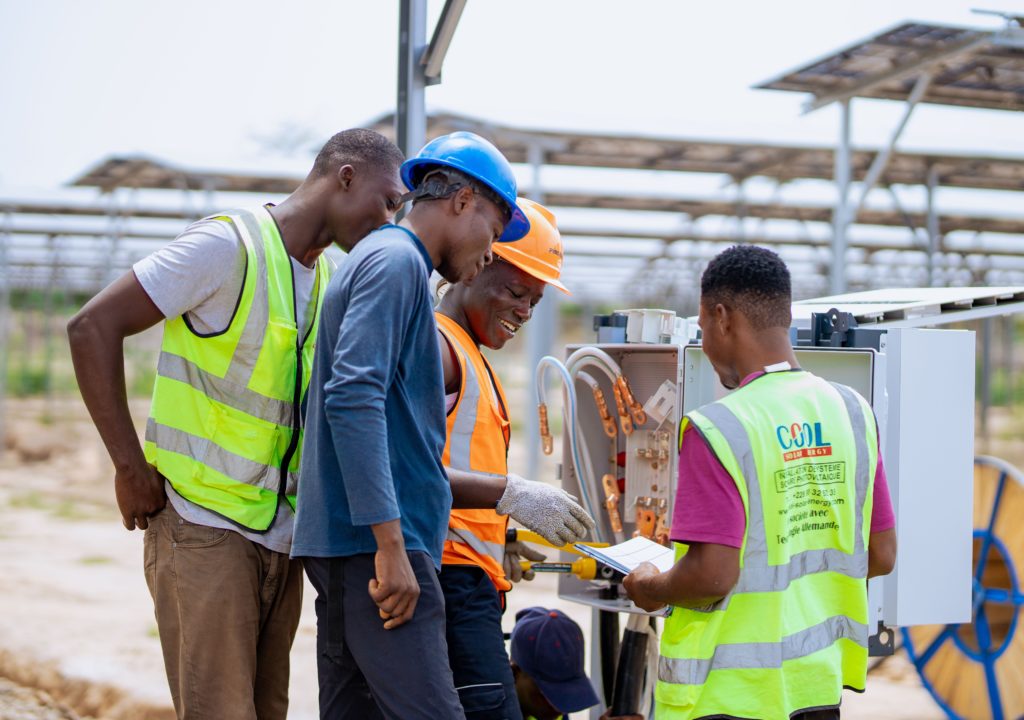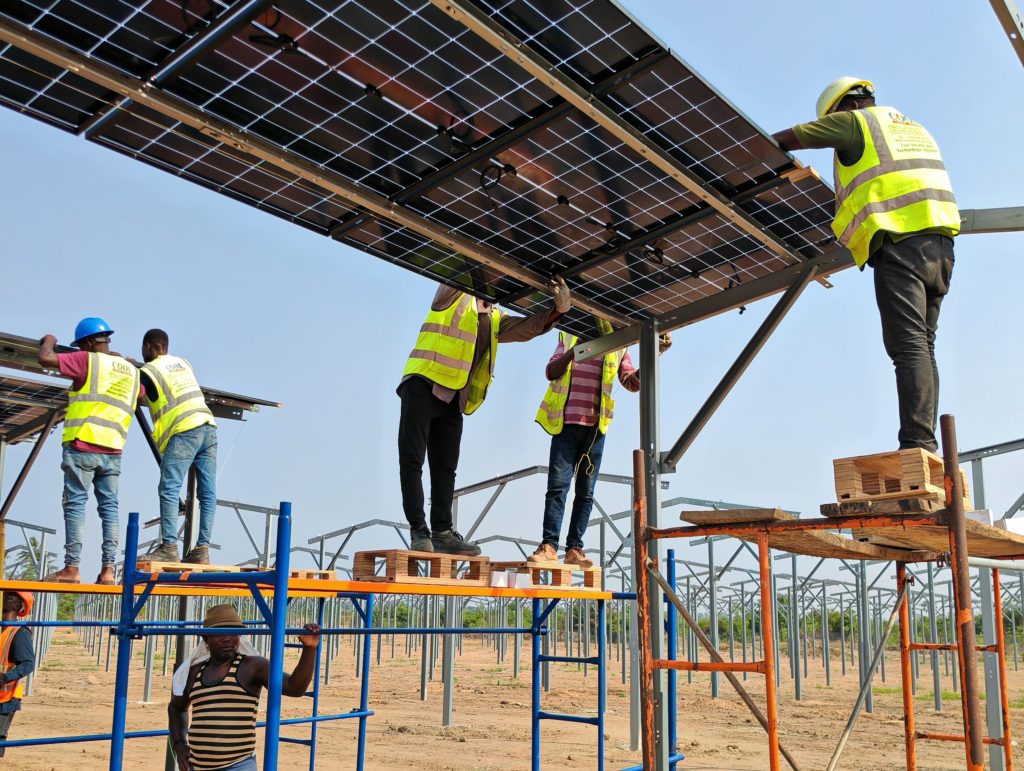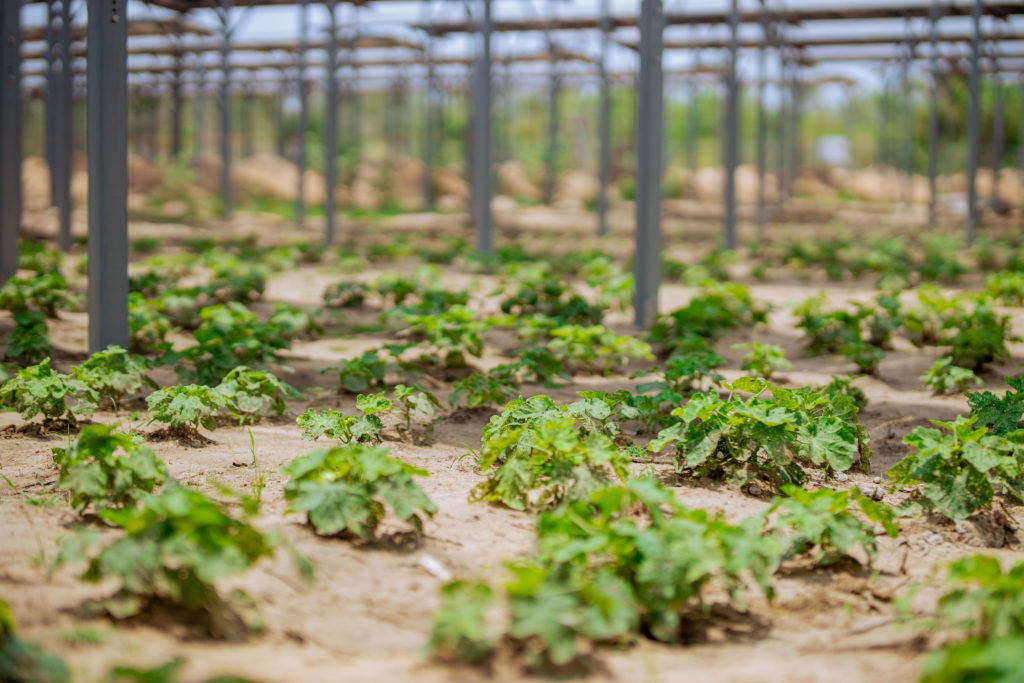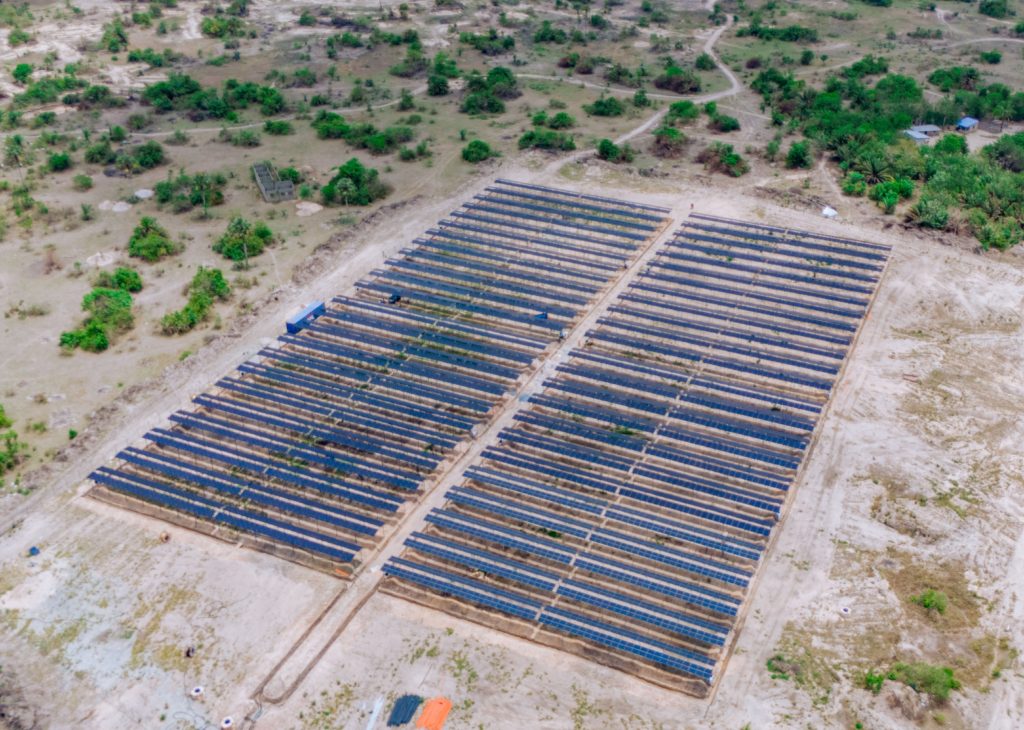Dalavé, Togo, july 2025. atmosfair has built the country’s first agri-photovoltaic system in Togo, together with the local company SUNtec. The system feeds renewable electricity into the Togolese grid, thus reducing the country’s dependence on imports. Vegetables thrive under the protection of the solar panels and are efficiently supplied with water thanks to the drip irrigation system installed.
“When it comes to electricity, the country is largely dependent on imports. And the electricity that the country produces itself comes mainly from fossil sources. The sun provides us with a great potential of energy here – it is important to use this resource in a targeted manner,” explains atmosfair project manager Kevin Möller. Once connected to the grid, the plant with 4,800 solar panels will generate 3,000 megawatt hours of clean electricity every year and avoids 2,000 tons of CO₂ emissions.

Climate protection beyond national targets
The CO₂ mitigation from the project are offset in accordance with Article 6.4 of the Paris Agreement. This means that they are in addition to the climate protection measures that Togo is planning itself. atmosfair has already received the necessary commitment from the Togolese government to transfer the certified reductions to atmosfair. Every year, the project saves a total of 10,000 tons of CO₂. Togo itself wants to reduce its greenhouse gas emissions by 20% by 2030 compared to the business-as-usual scenario. Emissions currently amount to around 2.5 million tons of CO₂ per year.

The plant is located in Dalavé, around 40 kilometers north of the capital Lomé. It was built by the Togolese company SUNtec and is just the beginning: a total of six agri-photovoltaic systems are planned. These should then supply 70,000 people with 15,000 megawatt hours of electricity, which corresponds to almost one percent of Togo’s electricity requirements. The atmosfair funding enables the combination of solar technology and agricultural use, a concept that does not yet exist in Togo and is more expensive than conventional solar systems.

Higher yields thanks to drip irrigation
Our agri-photovoltaic systems not only provide the people of Togo with green electricity. SUNtec uses a small portion of the electricity to power pumps that irrigate the fields below the solar panels. “With the drip irrigation system, we supply the plants with exactly the amount of water they need. This means that two harvests a year are now possible and we can cultivate the fields all year round – even in the dry season!” explains Prinz Lorenzo K. F. Kuegah, General Director of SUNtec.
The agri-photovoltaic systems in Dalavé and Kpessi are being built in so-called “agropoles” where the Togolese government is attracting food production companies to strengthen the local economy. These companies require electrical energy, which they obtain indirectly from our nearby photovoltaic systems.
Tomatoes, lettuce and okra, as well as herbs such as Artemesia, grow in the fields beneath the photovoltaic systems. The solar panels protect the plants from excessive solar radiation as well as from heavy rainfall, which are increasing due to global warming. The system therefore also contributes to climate adaptation.

Aerial view of Dalavé’s entire agri-photovoltaic system with a peak output of two megawatts.


 Share
Share Tweet
Tweet